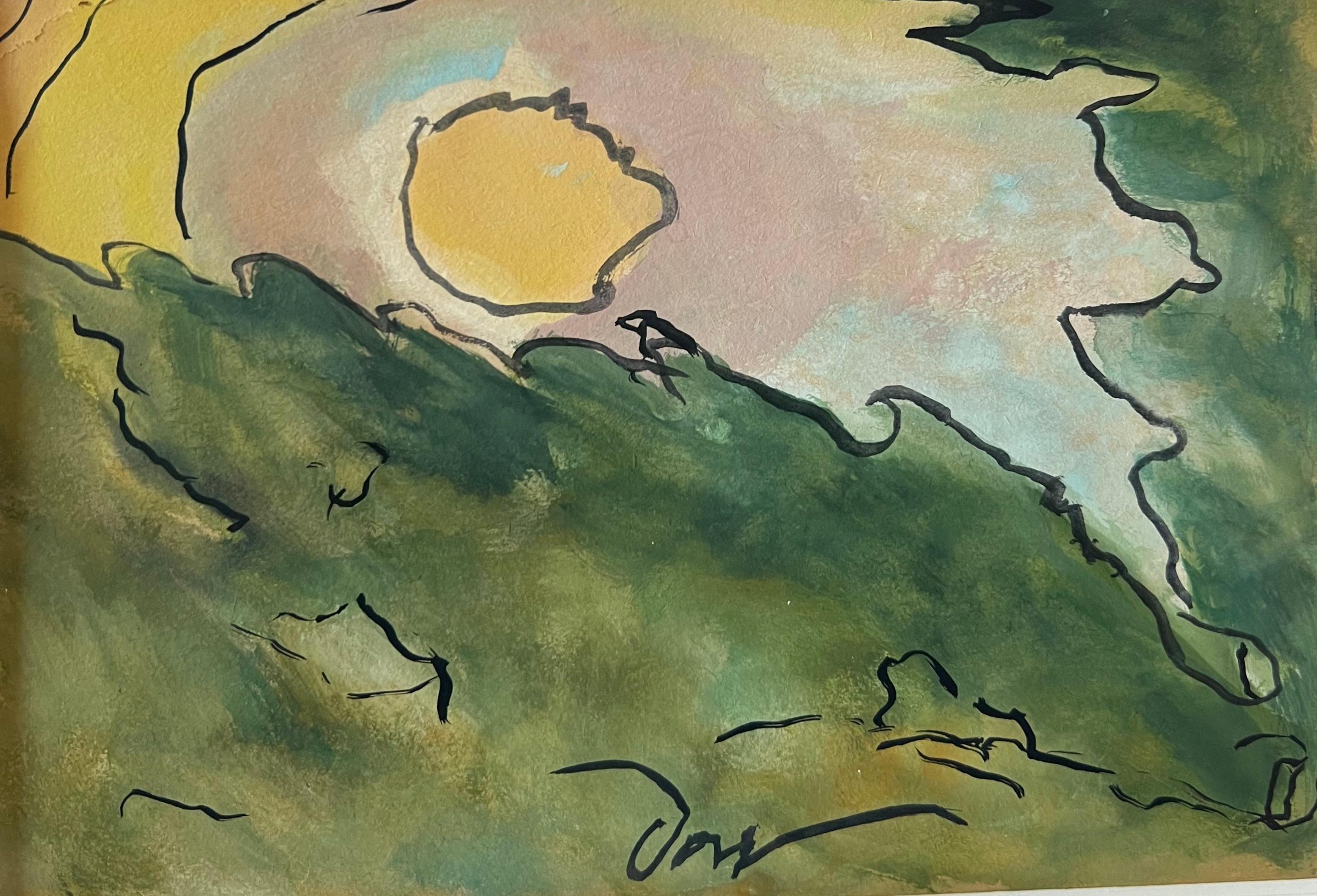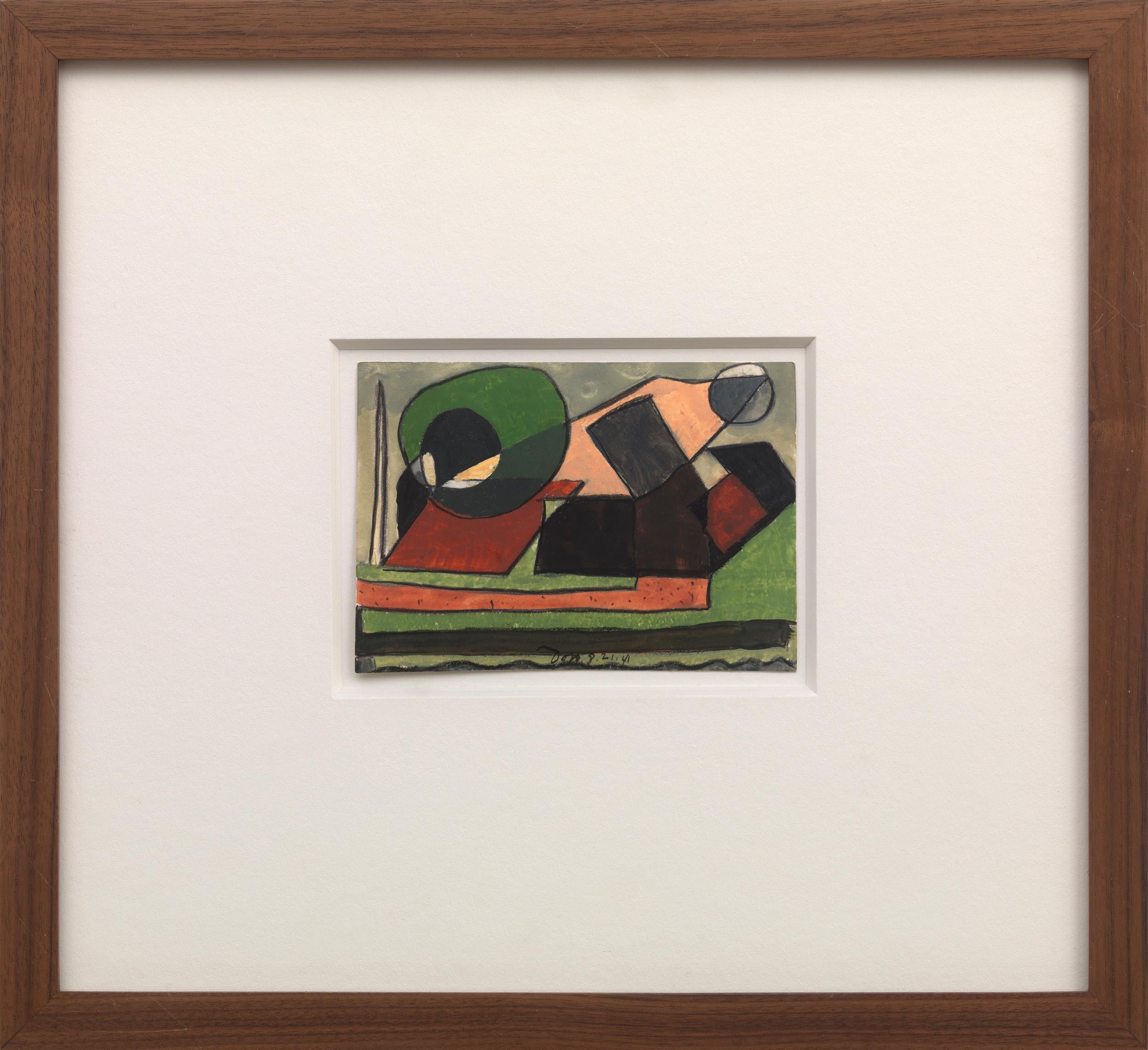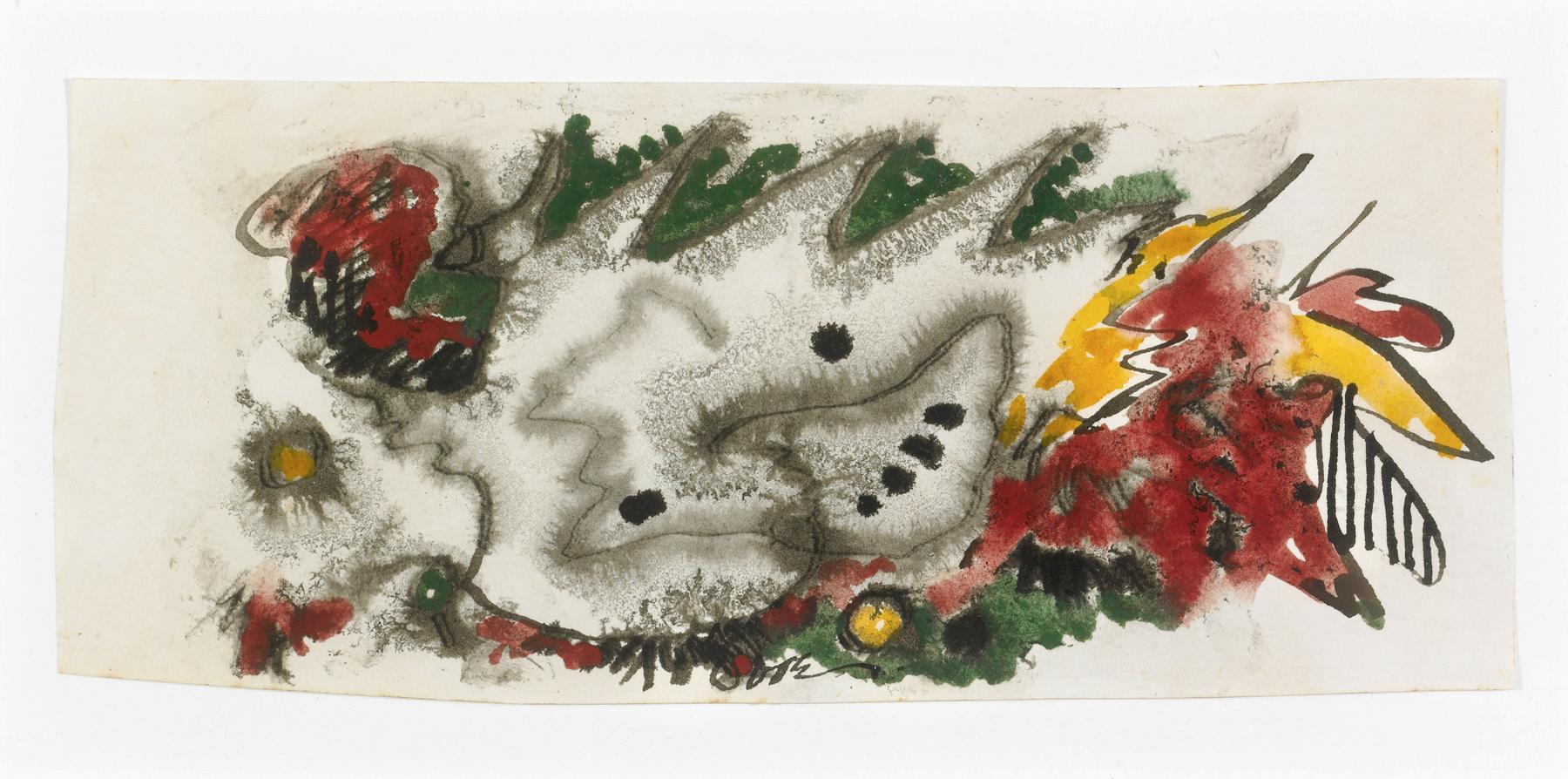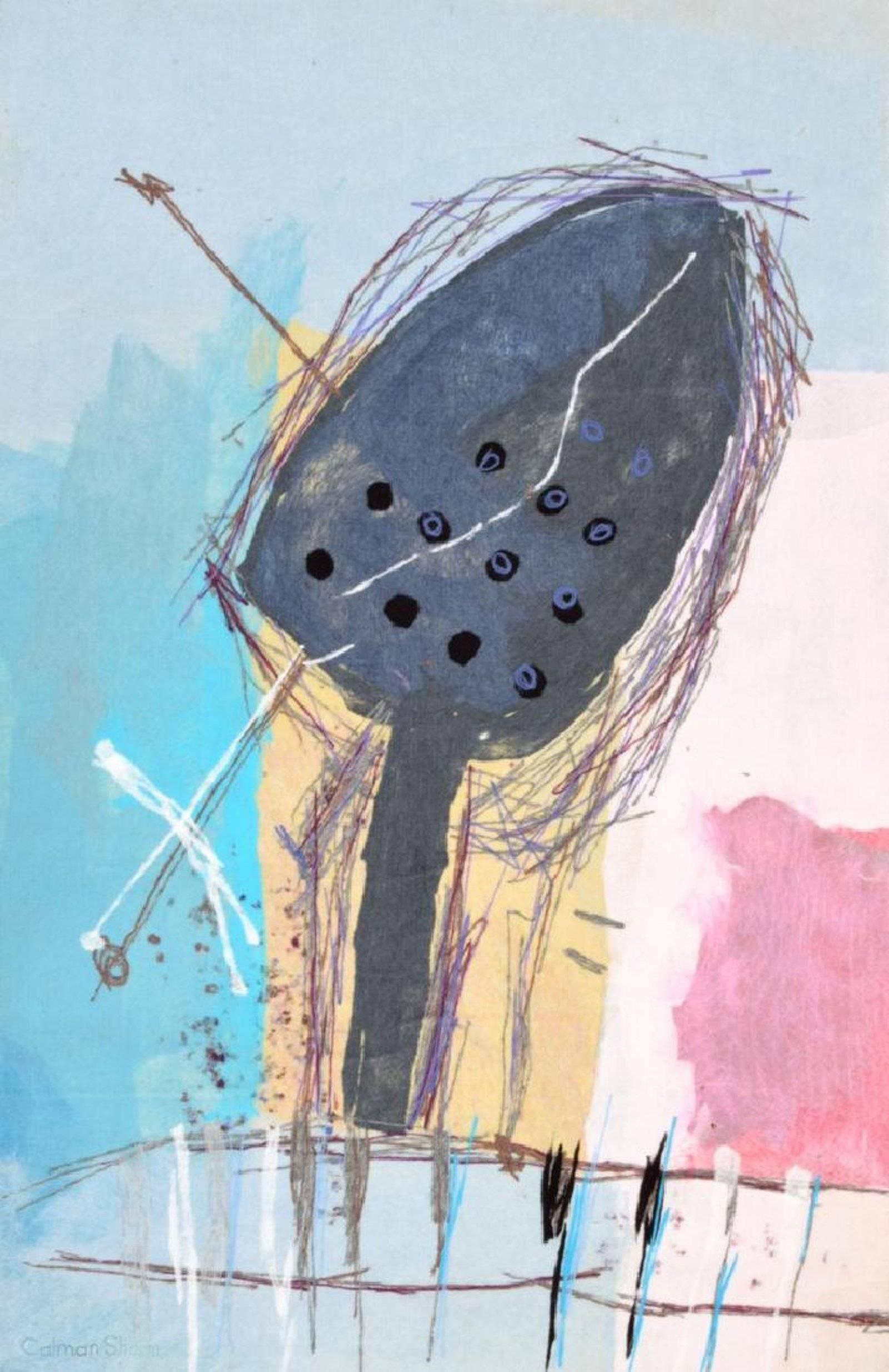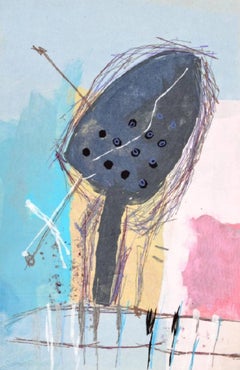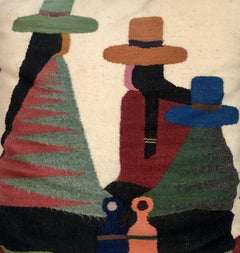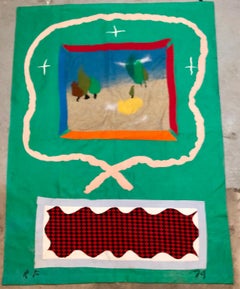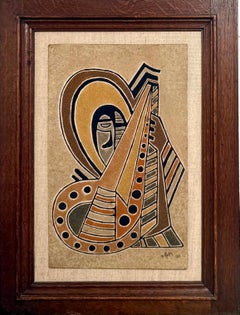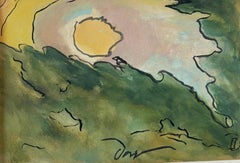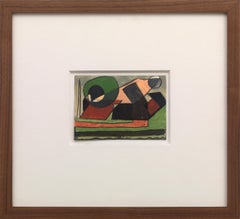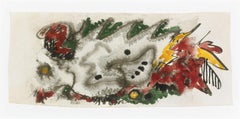Items Similar to Handmade Wool Tapestry Abstract American Modernist Arthur Dove Aubusson Style
Want more images or videos?
Request additional images or videos from the seller
1 of 15
(after) Arthur DoveHandmade Wool Tapestry Abstract American Modernist Arthur Dove Aubusson Style
$18,000
£13,638.41
€15,649
CA$25,328.91
A$27,843.44
CHF 14,633.23
MX$338,120.72
NOK 182,545.90
SEK 172,949.40
DKK 116,792.44
About the Item
Original hand made, hand woven wall hanging modern art tapestry.
Manufactura de Tapecarias de Portalegre (Portugal) (TMP Fino) tapestries are woven by hand on vertical looms.
Arthur Garfield Dove (1880–1946) was an American artist. An early American modernist, he is often considered the first American abstract painter. Dove used a wide range of media, sometimes in unconventional combinations, to produce his abstractions and his abstract landscape painting. Dove did a series of experimental collage works in the 1920s. He also experimented with techniques, combining paints like hand mixed oil or tempera over a wax emulsion. Dove's childhood interests included playing the piano, painting lessons, and being a pitcher on a high school baseball team. Dove attended Hobart College and Cornell University, and graduated from Cornell in 1903. Dove was chosen to illustrate the Cornell University yearbook. Dove's illustrations proved popular because they brought life to the characters and situations they depicted. After graduation, he became a well known commercial illustrator in New York City, working for Harper's Magazine and The Saturday Evening Post. Dove's parents were upset at his choice to become an artist, instead of a more profitable profession that his Ivy League degree would have enabled, and they would prove unsympathetic to the difficulties that came with a career in art.
In 1907, Dove and his first wife, Florence, traveled to France and moved to Paris, then the world's art capital. They made short trips to both Italy and Spain. While there, Dove joined a group of experimental artists from the United States, which included Alfred Henry Maurer. While in Europe, Dove was introduced to new painting styles, in particular the Fauvist works of Henri Matisse, and he exhibited at the annual Autumn Salon in 1908 and 1909. When Dove returned to America in 1909 he met Alfred Stieglitz, a well known photographer and gallery owner who was very active in promoting modern art in America, including works by European artists that had never been seen before in the U.S. Dove exhibited his works at Stieglitz's 291 gallery in 1910 as part of the show "Younger American Painters", The show, which included a group of Dove's pastels that came to be known as "The Ten Commandments", was the first public exhibition of abstract art by an American.
Dove's most consistent supporter was Duncan Phillips, founder of the Phillips Collection in Washington, D.C., which now holds the majority of Dove's work. His work influenced later abstract landscape painters, such as Julian Hatton and Georgia O'Keeffe. His paintings would go on to have a major impact on the work of Abstract Expressionists such as Lee Krasner, Jackson Pollock, and Mark Rothko. The artist died on November 23, 1946 in Long Island, NY. Today, his works are held in the collections of the Art Institute of Chicago, The Museum of Modern Art in New York, and the National Gallery of Art in Washington, D.C., among others.
The Estate of Arthur Dove is represented by the Terry Dintenfass Gallery.
In 1946 Jean Cassou selected tapestry as the focus for the Musée national d’art moderne’s opening exhibition. Manufactura de Tapecarias de Portalegre (Portugal) (TMP Fino) tapestries are woven by hand on vertical looms. They are flat weave rug Aubusson style, woven from the base up and from the reverse side. The decorative weft wraps around the warp, crating a density of 2,500 stiches/dm2. Portalegre tapestries are limited series of 1, 4 or 8 tapestries based on the same original, each one numbered and hand-signed by the artist on the bolduc, a small cotton rectangle of fabric sewed on the back side of the tapestry. The bolduc also states the title, number and the dimensions of the tapestry. Many great modern artists such as Alexander Calder, Picasso, Vasarely have had their works translated into tapestries. Many Portuguese and foreign artists have had their work translated into Portalegre tapestries. They are the equivalent of the Belgian or French Aubusson Tapisserie Atelier such as Pinton Freres, Tabard, Goubely Gatien. They have worked with Jean Lurcat, Mathieu Mategot, Eduardo Nery, Graca Morais, Maria Vieira da Silva,
- Creator:(after) Arthur Dove (1880 - 1946)
- Dimensions:Height: 35.5 in (90.17 cm)Width: 60 in (152.4 cm)
- Medium:
- Movement & Style:
- Period:
- Condition:
- Gallery Location:Surfside, FL
- Reference Number:1stDibs: LU38215766672
About the Seller
4.9
Platinum Seller
Premium sellers with a 4.7+ rating and 24-hour response times
Established in 1995
1stDibs seller since 2014
1,810 sales on 1stDibs
Typical response time: 1 hour
- ShippingRetrieving quote...Shipping from: Surfside, FL
- Return Policy
Authenticity Guarantee
In the unlikely event there’s an issue with an item’s authenticity, contact us within 1 year for a full refund. DetailsMoney-Back Guarantee
If your item is not as described, is damaged in transit, or does not arrive, contact us within 7 days for a full refund. Details24-Hour Cancellation
You have a 24-hour grace period in which to reconsider your purchase, with no questions asked.Vetted Professional Sellers
Our world-class sellers must adhere to strict standards for service and quality, maintaining the integrity of our listings.Price-Match Guarantee
If you find that a seller listed the same item for a lower price elsewhere, we’ll match it.Trusted Global Delivery
Our best-in-class carrier network provides specialized shipping options worldwide, including custom delivery.More From This Seller
View AllModernist Israeli Soft Tapestry Wall Hanging Rug Calman Shemi
By Calman Shemi
Located in Surfside, FL
this is a bright vibrant abstract wall hanging tapestry by Calman Shemi. I believe the material is wool with a linen backing but i am not positive. it can also be used as a floor rug...
Category
1980s Abstract Expressionist Mixed Media
Materials
Wool, Mixed Media
Vintage Handwoven Tapestry Wool Folk Art Rug Weaving Pillow or Wall Hanging
By Olga Fisch
Located in Surfside, FL
Olga Fisch was born in Hungary, studied in Germany and lived in Morocco and Ethiopia before receiving asylum as a Jewish refugee in Ecuador in 1939. For her Indian-inspired designs, Mrs. Fisch uses natural black and white sheep...
Category
1950s Folk Art More Art
Materials
Wool
70's Large Colorful Abstract Expressionist Art Protis Tapestry Wool Wall Hanging
By Robert Freimark
Located in Surfside, FL
Art Protis Wall Tapestry
Robert Freimark (1922 - 2010)
Bob Freimark was active/lived in Ohio, California, Michigan. Robert Freimark is known for abstract expressionist painting, ...
Category
1970s Abstract Expressionist Mixed Media
Materials
Wool
1952 Hungarian Cubism Wall Hanging Relief Sculpture Sand Painting Cubist A. Reth
By Alfred Reth
Located in Surfside, FL
Alfred Reth (1884-1966)
Mixed media composition on panel
Gritty, sand like texture
Hand signed and dated 1952 in lower right corner
Frame: H 26.5 in X W 20.5 in. Panel: H 19 in. W 12...
Category
1950s Cubist Abstract Sculptures
Materials
Mixed Media, Board
Fiber Art Collage Israeli Modernist Vibrant Colorful Tapestry Wall Hanging Rug
By Smadar Livne
Located in Surfside, FL
Smadar Livne, an Israeli born artist, is currently living and creating in Owings Mills, Maryland. An award winning artist, she is recognized as one of today’s leading Judaica artists. Educated at Haifa University, Livne has degrees in art, literature, and architecture. She has continued her education of philosophy through Baltimore Hebrew University. Portraying scenes from her life and learning is what gives her work an edge. Livne’s works are vibrant and exciting, and express the joy that Livne sees in life. Not only are the works beautiful, but subtle messages are also painted into each piece, and require time for observation and reflection. Technique sets Livne apart from the rest. Using bold, bright colors and wide strokes, she adds other items in a layering technique. The eye catching result contains layers of paint, fabric, wool and other materials objects, and meaning. Following in the manner of Calman Shemi and before him Kopel Gurwin, Itche Mambush and Georges Goldstein...
Category
20th Century Abstract More Art
Materials
Textile
Italian Wool Felt Handmade Futurist Fortunato Depero Art Tapestry Wall Hanging
By Ivana Gaifas
Located in Surfside, FL
It is signed in a stitch Omaggio a Depero, Ivana, 2000
Fortunato Depero (1892 – 1960) was an Italian futurist artist and painter, writer, sculptor and graphic designer who worked in...
Category
20th Century Futurist More Art
Materials
Wool, Felt, Thread
You May Also Like
Arthur Dove 1940 "Sun" Painting
By Arthur Dove
Located in San Francisco, CA
Arthur Dove: 1880-1946. One of the most important early American Modernists and Abstract Expressionists. He has had auction results over $8,000,000 and that record was 2 weeks ago. A...
Category
1940s Abstract Abstract Paintings
Materials
Mixed Media
"Through the Trees" Watercolor Mid-20th Century Modern Excellent Provenance
By Arthur Dove
Located in New York, NY
"Through the Trees" Watercolor Mid-20th Century Modern Excellent Provenance
Arthur Dove (1880-1946)
"Through the Trees"
5 x 7
Watercolor on paper, 1938
Singed lower center
Framed: 1...
Category
1930s American Modern Abstract Drawings and Watercolors
Materials
Paper, Watercolor
Untitled (Abstraction IV Geometric)
By Arthur Dove
Located in London, GB
Dove uses ink to render angular and rounded shapes, he then fills in these shapes with gouache using loose brush marks which create a sensitive textural landscape. The transparency o...
Category
1940s American Modern Abstract Drawings and Watercolors
Materials
Watercolor
Price Upon Request
Italy Goes to War
By Arthur Dove
Located in Bryn Mawr, PA
Provenance
An American Place, New York;
World House Galleries, New York, 1953;
Private collection, New York;
Betty Krulik Fine Art, 2007;
Avery Galleries until present
Exhibitions
An American Place, New York, Exhibition of New Arthur G. Dove Paintings...
Category
1940s American Modern Abstract Drawings and Watercolors
Materials
Paper, Watercolor
The Other Farm
By Arthur Dove
Located in London, GB
This quaint and reflective work features delicate and inky lines depicting a farmhouse nestled within a cool-toned watercolour landscape. Muted red brick, almost silver bluish greys,...
Category
Mid-20th Century American Modern Landscape Drawings and Watercolors
Materials
Ink, Watercolor
Price Upon Request
Vintage French Tapestry by Georgette Owens. Size: 3 ft x 4 ft 10 in
By Georgette Owens
Located in New York, NY
Vintage French Tapestry by Georgette Owens, France, Mid-Twentieth Century. Size: 3 ft x 4 ft 10 in (0.91 m x 1.47 m)
Category
20th Century French Mid-Century Modern Tapestries
Materials
Wool
More Ways To Browse
Tapestry Artist
Modern Art Tapestry
Vintage French Wall Tapestry Hanging Tapestries
Henri Matisse Original Hand Signed
Modern Aubusson Tapestry
Vieira Da Silva
Modernist Tapestry
Georgia O Keeffe Paintings
Julian Hatton
Antique Wooden Pencil
Arizona Landscape Painting
Carlson Antique
Cortes Oil
Elena Bulatova
Elisee Maclet
Foxglove Painting
Henry Hill
Indonesian Oil Paintings
